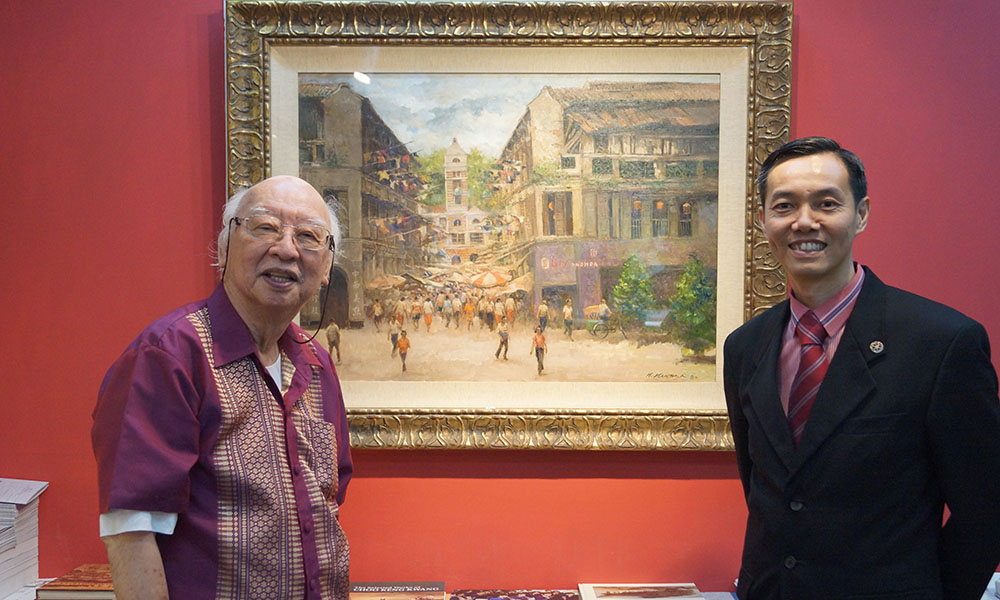By Cindy Liew
Why do you work so hard?”
“Because I am in Singapore.” Azman Said, a young technology engineer, replied with a smile. I smiled back in response: surrounding us were the bustling crowds and tall, glass fronted skyscrapers of Raffles Place, which glinted in the afternoon sun.
Do people in Singapore really work much harder than the rest of the world? A comparison of weekly work hours in Singapore and the United States reveals some interesting insights:

From the results in Tables 1 and 2, people in Singapore generally work longer hours than people in the US.
Apart from what the statistics show, how is it like working in the US?
From California to Singapore
At first sight, Ms Rainie Wong looks like the quintessential independent go-getter. She obtained her B.Eng. in Telecommunications Engineering from the University of New South Wales in Australia. After working in Tuas for three years as a CAD design engineer, she left her first job hoping to learn new skills and upgrade herself for better career opportunities. In 2005, her new journey started in Orange County, California, where she worked as a sales engineer.
In Singapore and most Asian countries, it is tough to attain work-life balance.
– Ms Rainie Wong
“I was kind of being forced to learn driving in the US. Unlike Singapore where public transport is easily accessible and affordable, I was handicapped in California without a vehicle. Walking to the nearest grocery stall would take me 45 minutes,” Rainie recalls.
In the US, Rainie was fortunate enough to work under a very encouraging CEO who groomed her, honing her skills professionally and personally. “I felt motivated to work as the environment (in the US) encourages personal growth and I had more time to do my own stuff after work or during the weekends,” says Rainie.
In 2008, however, Rainie’s company was not doing well during the onset of the global financial crisis, so she returned to Singapore in April. Upon coming back, she soon managed to secure a sales engineer position in the electronics manufacturing industry.
I asked Rainie how the work culture in the US compares to that in Singapore.
“You can enjoy work-life balance in the US. Bosses would invite their employees and family for gatherings and I could feel a sense of belonging working there,” shares Rainie. “And the work environment in the US is less bureaucratic. You are [free] to make suggestions to your boss and discuss your thoughts openly,” she adds.
To her, there is a drastic difference in work culture between the US and Singapore. “In Singapore and most Asian countries, it is tough to attain work-life balance. People work till late night to complete their tasks, and I feel that it has become a norm to work late in Singapore,” says Rainie.
Indeed, in a research report published in 2010 titled “A Culture of Work-Life ‘Imbalance’ in Singapore”, many of the interviewed employees in middle-management positions have normalised long working hours and consider “not doing so as problematic”.
On the bright side, there have been attempts to improve employees’ work-life balance. One such initiative taken by the Singapore government is the Work-Life Grant, which provides companies with funding and incentives to help promote flexible work arrangements for employees. But in terms of implementation, employers’ efforts may play a bigger role and take up a larger share in affecting its outcome.
“I do see the Singapore government making efforts to change the work culture in Singapore companies, but it would take time for these to be implemented successfully,” shares Rainie.
Despite the long working hours and higher stress levels, I asked Rainie what she likes best about working in Singapore.
“I can be with my family all the time,” she says, with a happy smile.
Editor’s Note: Despite its relatively positive work culture, the United States does not guarantee paid parental leave, making it the only developed country without this law. In April 2016, San Francisco became the first US city to mandate fully paid parental leave. Employers there will bear the cost of their workers’ six-week parental leave.















